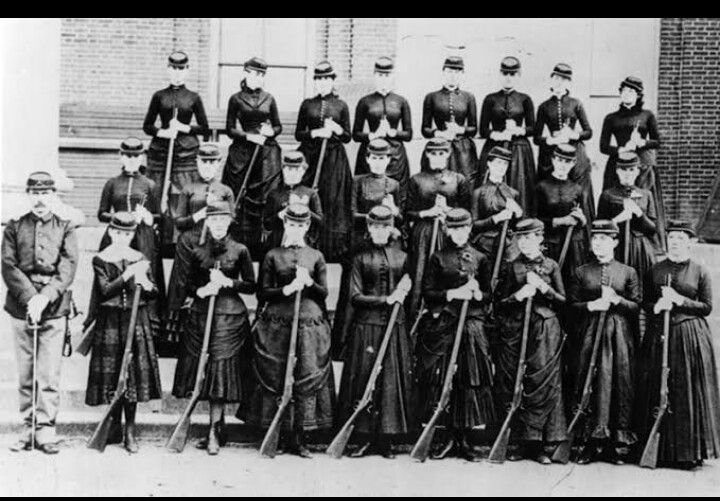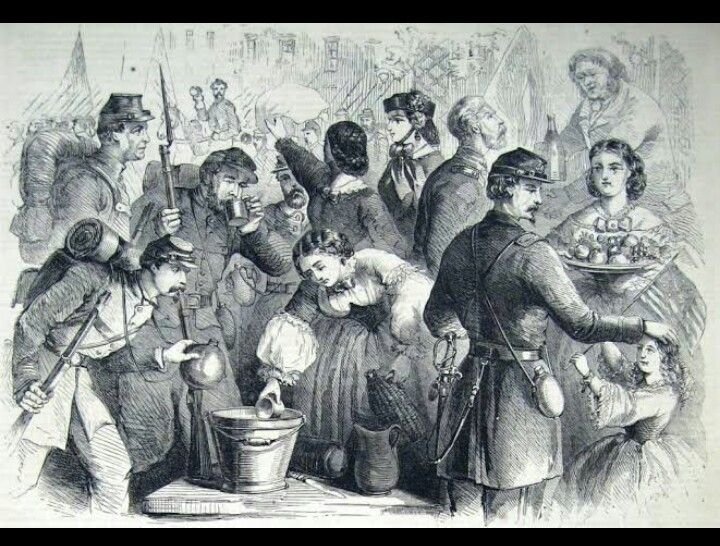
IMAGE SOURCE:google image
The Civil War challenged the ideology of Victorian in many ways that had defined the lives of men and women in the antebellum era.
The war forced the North and the south women into public life in ways they could scarcely have imagined a generation before.
The lives of American women years before the Civil war were shaped by a set of ideals that historians call “the Cult of True Womanhood.”
True women devoted their lives to creating a clean,comfortable, nurturing home for their husbands and children As men’s work moved away from the home and into shops, offices and factories.
During the Civil War more than 400 women disguised themselves as men and fought in the Union and Confederate armies.
The American women turned their attention to the world outside the home. Thousands of women in the North and South joined volunteer brigades and signed up to work as nurses. It was the first time in American history that women played a significant role in a war effort.

IMAGE SOURCE:: google image
With the war outbreak in 1861, women and men alike eagerly volunteered to fight for the cause.
Women organized ladies’ aid societies in the Northern states to supply the Union troops with everything they needed, from food (they baked and canned and planted fruit and vegetable gardens for the soldiers) to clothing (they sewed and laundered uniforms, knitted socks and gloves, mended blankets and embroidered quilts and pillowcases) to cash (they organized door-to-door fundraising campaigns, county fairs and performances of all kinds to raise money for medical supplies and other necessities).
Inspired by the work of Florence Nightingale and her fellow nurses in the Crimean War,many women wanted to take a more active role in the war, they tried to find a way to work on the front lines, caring for sick and injured soldiers and keeping the rest of the Union troops healthy and safe.
They succeeded in june 1861 by making The federal government agreed to create “a preventive hygienic and sanitary service for the benefit of the army” called the United States Sanitary Commission.
The Sanitary Commission’s primary objective was to combat preventable diseases and infections by improving conditions (particularly “bad cookery” and bad hygiene) in army camps and hospitals. It also worked to provide relief to sick and wounded soldiers. By war’s end, the Sanitary Commission had provided almost $15 million in supplies–the vast majority of which had been collected by women–to the Union Army.
Almost 20,000 women worked more directly for the Union war effort. Working-class white women and free and enslaved African-American women worked as laundresses, cooks and “matrons,” and some 3,000 middle-class white women worked as nurses. The activist Dorothea Dix, the superintendent of Army nurses, put out a call for responsible, maternal volunteers who would not distract the troops or behave in unseemly or unfeminine ways: Dix insisted that her nurses be “past 30 years of age, healthy, plain almost to repulsion in dress and devoid of personal attractions.” (One of the most famous of these Union nurses was the writer Louisa May Alcott.)
Army nurses traveled from hospital to hospital, providing “humane and efficient care for wounded, sick and dying soldiers.” They also acted as mothers and housekeepers–“havens in a heartless world”–for the soldiers under their care.
Hi! I am a robot. I just upvoted you! I found similar content that readers might be interested in:
http://www.history.com/topics/american-civil-war/women-in-the-civil-war